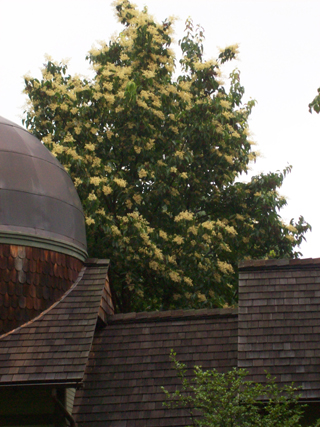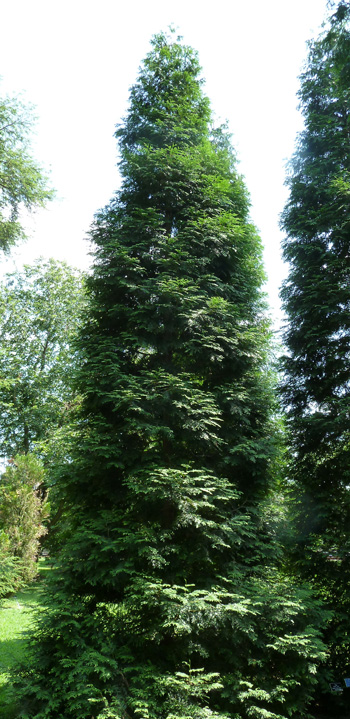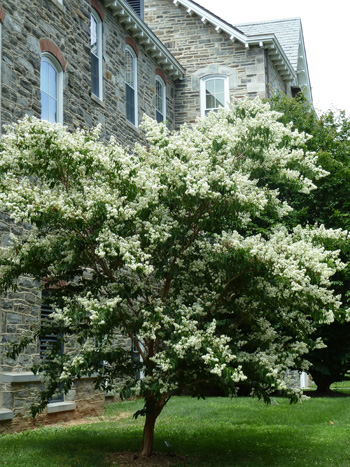Plants of the Week – July 11
 Poliothyrsis sinensis is in full bloom. The deciduous tree, a member of the Flacourtiaceae family, is native to central China. E.H. Wilson, noted plant collector, first supplied the Arnold Arboretum with seed in 1908. Three trees, averaging 30 feet in height, are planted around the Cunningham House and Wister Center. Photo credit: J. Coceano
Poliothyrsis sinensis is in full bloom. The deciduous tree, a member of the Flacourtiaceae family, is native to central China. E.H. Wilson, noted plant collector, first supplied the Arnold Arboretum with seed in 1908. Three trees, averaging 30 feet in height, are planted around the Cunningham House and Wister Center. Photo credit: J. Coceano

A 1998 recipient of the Pennsylvania Horticultural Society Gold Medal Plant Award, Thuja ‘Green Giant’ is a tightly-pyramidal evergreen. Adaptable and readily available, ‘Green Giant’ is ideal as a single specimen, grouped to form a screen, or as an anchor to frame a view. Consider using as a substitute for leyland cypress. Thuja ‘Green Giant’ will be available at the Scott Associates Plant Sale. Photo credit: J. Coceano
 Crape myrtles are tough plants! Capable of withstanding drought and rarely browsed by deer, they deserve more consideration in the garden. Lagerstroemia faurei ‘Fantasy’, growing along Trotter Hall, is covered in white blooms and produces highly attractive cinnamon-brown bark. It is one of the first crape myrtles to bloom at the Scott Arboretum. Photo credit: J. Coceano
Crape myrtles are tough plants! Capable of withstanding drought and rarely browsed by deer, they deserve more consideration in the garden. Lagerstroemia faurei ‘Fantasy’, growing along Trotter Hall, is covered in white blooms and produces highly attractive cinnamon-brown bark. It is one of the first crape myrtles to bloom at the Scott Arboretum. Photo credit: J. Coceano





Garden Prince
Posted at 03:35h, 26 JulyI have a question about Poliothyrsis sinensis. Is it difficult to propagate from seed? I required some seed of this tree last year (November 2010) and sowed it immediately but so far I have not have any germination. Do you know if the seeds need a special treatment like GA-3 treatment? I searched the internet but I have not found anything on seed germination of Poliothyrsis sinensis other than a Arnoldiana article which says that Poliothyrsis sinensis seeds germinate easily without giving any specific details.
Thanks in advance for answering this query.
Greetings,
Garden Prince
The Netherlands (yes, that small country in Werstern Europe!)
Josh Coceano
Posted at 12:29h, 29 JulyWe have never propagated Poliothyrsis from seed. The plant is monoecious and requires another plant for proper pollination and fertilization. We have three mature trees in close proximity which have yielded seedlings. Scott McMahan of McMahan’s Nursery in Clermont, Georgia shared several insights. First, was the seed properly pollinated? If pollinated, freshly sown seed should emerge quickly. If the seed was good but allowed to dry, it may be “locked” up for several seasons before dormancy is broken.